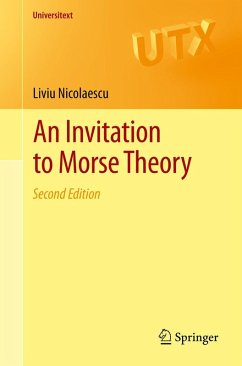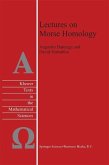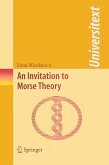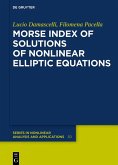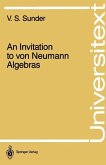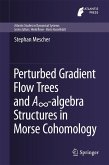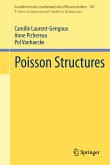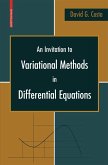Dieser Download kann aus rechtlichen Gründen nur mit Rechnungsadresse in A, B, BG, CY, CZ, D, DK, EW, E, FIN, F, GR, HR, H, IRL, I, LT, L, LR, M, NL, PL, P, R, S, SLO, SK ausgeliefert werden.
"Morse theory, a tool within differential topology, strategically studies a given abstract smooth manifold by first imposing on it a nearly arbitrary numerical function, and then cleverly extracting from it purely topological information. ... Undergraduates will see that the foundations of this advanced topic build directly on a(n honest) course in multivariable calculus ... . Primarily for mathematics students. Summing Up: Recommended. Upper-division undergraduates through professionals." (D. V. Feldman, CHOICE, Vol. 45 (6), February, 2008)
"The book is a nicely written self-contained introduction to Morse theory ... will be useful for mathematicians of various levels, including graduate students and researchers." (Michael Farber, Zentralblatt MATH, Vol. 1131, 2008)
"Nicolaescu's book starts with the basics of Morse theory over the reals ... . The discussion continuously presents some really nice and well chosen applications of the theory, and finally lets the reader see, that the whole theory can go on to complex, where the set of regular values, that is disconnected by nature over the reals, becomes connected. ... This book is warmly recommended for interested graduate students and researcher ... ." (Árpád Kurusa, Acta Scientiarum Mathematicarum, Vol. 74, 2008)
"Nicolaescu's book complements previous books on Morse theory by quickly developing the foundations of the subject in terms of gradient-like vector fields and discussing applications not found in other books on Morse theory. ... the book is recommended for graduate students and researchers ... ." (David E. Hurtubise, Mathematical Reviews, Issue 2009 m)
From the reviews of the second edition:
"The present book provides a wonderful presentation of concepts and ideas as well as problems with their solutions in Morse Theory, an important and challenging part of Differential Topology. ... The book ends with an usefuland relevant bibliography containing 85 references. It also contains an index of symbols and a subject index. ... 'The book will be useful for mathematicians of various levels, including graduate students and researchers'." (Dorin Andrica, Zentralblatt MATH, Vol. 1238, 2012)

